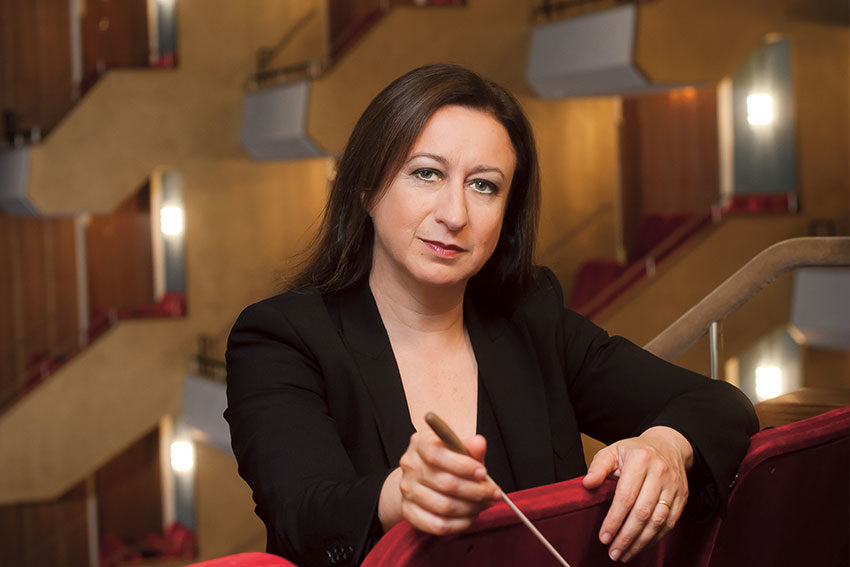Simone Young: Lack of concert hall 'not good for the artistic health of the city'

World-renowned Australian conductor Simone Young will reunite with four of the country’s best female voices for a showcase of the music of Richard Strauss but feels her Adelaide program has been affected by the lack of a permanent venue for the ASO and State Opera.
Simone Young is fresh off a plane, having just wrapped up a season of Richard Strauss’ Elektra with Zurich Opera but she is clearly fired up about her pending performance with State Opera South Australia in August.
“I’ve been conducting Strauss for 25 years,” Young tells The Adelaide Review from her hotel room in Brisbane. “[He] loved the [female] voice and all his operas have women at the heart of them.”
That makes him the perfect choice of composer for State Opera’s Girls’ Night Out, which puts Young on the Adelaide Town Hall stage with internationally renowned Australian opera performers Emma Matthews, Miriam Gordon-Stewart, Catherine Carby and Lisa Gasteen.
“This will be the first time these four singers and myself have got together since I left Opera Australia,” explains Young, and the passion with which she dives into describing the program and the performers leaves no doubt that this will be a reunion of friends as well as highly respected colleagues in the opera world.
“It is five great friends getting together and making music,” says Young simply.

Indeed it was friendship that led to Young making space for the concert in her hectic global schedule. She is good friends with State Opera’s artistic director, Stuart Maunder, who personally invited her to conduct this gala performance which he describes as a “rare occasion to witness … the sheer musical genius” of this group of performers.
Although Young describes Strauss as not being an especially innovative composer, she says he took the romantic style and was able to run with it, composing some of the most loved operas of the era such as Der Rosenkavalier and Salome. He also wrote many songs and tone poems, some of which Young thinks will be less familiar and may never have been seen in a live performance by Adelaide audiences.
“[The program] is a nice mix of really familiar music and other pieces maybe only heard as recordings,” says Young.
She adds that it may be the first time some members of the ASO have performed pieces such as the Intermezzo interludes.
“I always enjoy working with the Adelaide Symphony Orchestra,” Young says.
Taking a more serious tone, however, she adds, “The lack of control over their venue is a problem,” she says of calls for a new concert hall for the ASO, which peaked some years ago but have more recently taken a back seat to multi-million dollar projects such as the Her Majesty’s Theatre redevelopment and Lot 14 art gallery. “At the political decision-making level they are not recognising that an orchestra develops and grows in its acoustic. It is not good for the artistic health of the city [that the orchestra has no permanent concert hall] and Adelaide has to come to terms with this.
“It is a real issue for people like me. A venue decides the repertoire.
“I love the Town Hall [but] there is a whole chunk of music that I will not do in Adelaide. We have trimmed this program to fit the venue so we don’t have people pinned to the back of their seats. That is not good.
“It is a real issue for people like me. A venue decides the repertoire.
“The best orchestras in the world rehearse in their [performance] space. It is a positive ‘love in’ circle. The minute you separate them [rehearsal and performance] you do damage to both.”
Setting aside her concerns for a more permanent home for this sort of music in Adelaide, Young returns to the program for Girls’ Night Out.
“It is gorgeous music – even if people don’t know it well. I have taken a risk finishing the first half with Morgen,” she adds.
The song title translates as “Tomorrow”, and was the last of a set of four songs composed by Strauss in 1894, originally for piano accompaniment only but later scored for orchestra featuring harp and horns.
“It is so simple,” Young says. “Three minutes long … but possibly one of the most ravishing pieces ever written.”
Girls’ Night Out
Adelaide Town Hall
Friday August 9
stateopera.com.au
Header image:
Berthold Fabricius